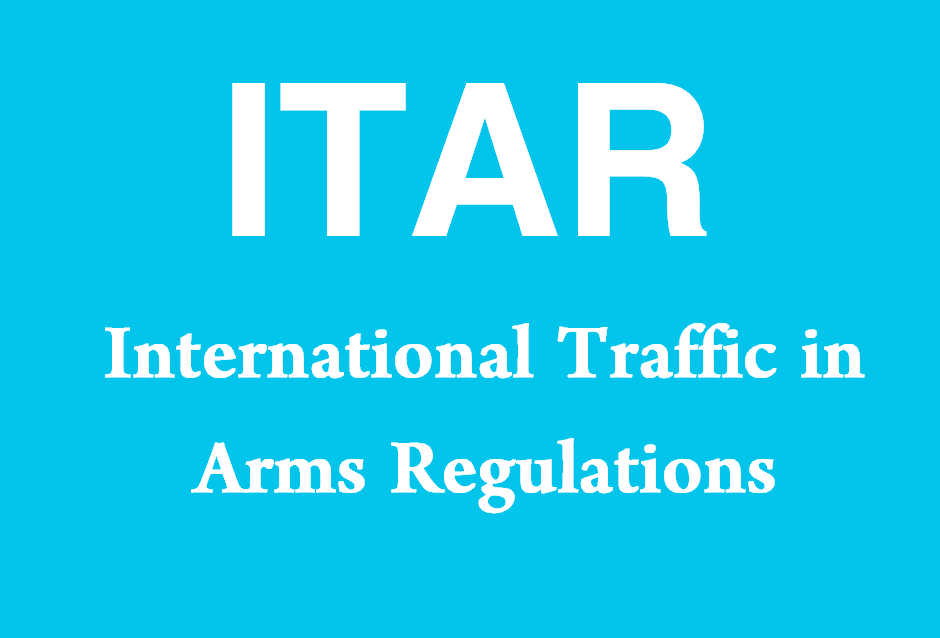What does IFS stand for?
IFS stands for “International Financial Statistics.” International Financial Statistics is a comprehensive database provided by the International Monetary Fund (IMF), containing a wide range of economic and financial data for countries around the world. This valuable resource offers users access to key indicators such as exchange rates, interest rates, inflation rates, balance of payments, government finances, and international reserves. The data compiled in the IFS database are collected from national authorities and other sources, providing policymakers, economists, analysts, and researchers with essential information for monitoring economic developments, conducting research, and making informed decisions in the global financial landscape.

Comprehensive Explanation of International Financial Statistics
International Financial Statistics (IFS) is a vital database maintained and published by the International Monetary Fund (IMF), offering a comprehensive collection of financial and economic data from countries worldwide. The IFS database serves as a crucial resource for policymakers, economists, analysts, researchers, and financial institutions, providing access to a wealth of information on key economic indicators, monetary aggregates, balance of payments, government finances, and external debt. This comprehensive explanation explores the scope, content, methodology, uses, and significance of the International Financial Statistics database.
Scope and Content
The International Financial Statistics database covers a broad spectrum of economic and financial data, including:
- Macroeconomic Indicators: Data on national accounts, gross domestic product (GDP), gross national income (GNI), consumer price index (CPI), producer price index (PPI), industrial production, employment, and unemployment rates.
- Monetary and Financial Statistics: Information on money supply aggregates, central bank reserves, interest rates, exchange rates, banking sector assets and liabilities, credit aggregates, and financial market indicators.
- Balance of Payments: Statistics on trade balances, current account balances, capital flows, foreign direct investment (FDI), portfolio investment, remittances, external debt, and international reserves.
- Government Finance: Data on government revenues, expenditures, deficits, debt levels, fiscal balances, taxation policies, and public sector borrowing.
- External Debt: Indicators of external debt sustainability, debt service ratios, debt composition, creditor profiles, and debt relief initiatives.
Methodology and Data Sources
The data compiled in the International Financial Statistics database are sourced from national authorities, central banks, statistical agencies, international organizations, and other reputable sources. The IMF collects, validates, and aggregates the data using standardized methodologies and reporting frameworks to ensure consistency, comparability, and reliability across countries and time periods. Data quality assessments, data reconciliation processes, and data estimation techniques are employed to address discrepancies, gaps, and inconsistencies in the reported data, enhancing the accuracy and integrity of the IFS database.
Uses and Significance
The International Financial Statistics database serves multiple purposes and provides valuable insights for various stakeholders:
- Policy Analysis: Policymakers use IFS data to assess economic conditions, monitor macroeconomic indicators, formulate monetary and fiscal policies, and evaluate the effectiveness of policy interventions in achieving macroeconomic stability, growth, and resilience.
- Economic Research: Economists and researchers utilize IFS data for empirical analysis, econometric modeling, forecasting, and academic research on topics such as exchange rate dynamics, monetary policy transmission, international trade, financial market integration, and development economics.
- Financial Analysis: Financial institutions, investors, and analysts rely on IFS data for risk assessment, portfolio management, investment decision-making, currency risk hedging, credit analysis, and market research in global financial markets.
- International Comparisons: Analysts and practitioners use IFS data to benchmark economic performance, compare policy outcomes, and assess relative strengths and weaknesses of countries’ economic and financial systems in a global context.
- Capacity Building: Policymakers, central bankers, and statisticians in developing countries benefit from capacity building initiatives, technical assistance, and training programs offered by the IMF to improve data collection, reporting standards, and statistical practices, enhancing the quality and reliability of national economic statistics.
Access and Availability
The International Financial Statistics database is accessible to subscribers and users through various channels:
- Online Database: The IMF offers online access to the IFS database through its website, providing users with interactive tools, customizable queries, downloadable datasets, and user-friendly interfaces for accessing and analyzing the data.
- IMF eLibrary: Subscribers can access the IFS database as part of the IMF eLibrary, which offers a comprehensive collection of IMF publications, statistical databases, research papers, and analytical tools for subscribers to explore and utilize.
- Data Dissemination Platforms: The IMF disseminates IFS data through its data dissemination platforms, including the IMF Data Portal, IMF DataMapper, IMF Data API, and IMF e-GDDS (Enhanced General Data Dissemination System), enabling users to access, visualize, and download the data in multiple formats.
- Subscription Services: Institutional users, academic institutions, government agencies, and research organizations can subscribe to the IFS database through the IMF’s subscription services, which offer tailored access options, licensing agreements, and support services to meet users’ needs and requirements.
Future Developments and Enhancements
The International Financial Statistics database continues to evolve and adapt to changing user needs, technological advancements, and emerging trends in the global economy. The IMF remains committed to enhancing the usability, coverage, and quality of the IFS database through ongoing initiatives, improvements, and innovations, including:
- Data Expansion: The IMF regularly updates and expands the coverage of the IFS database by incorporating new data series, additional countries, and enhanced metadata to reflect evolving economic realities and address emerging data needs.
- Data Visualization Tools: The IMF develops interactive data visualization tools, dashboards, and analytical platforms to facilitate users’ exploration, interpretation, and presentation of IFS data, enabling intuitive data-driven decision-making and communication.
- Data Integration: The IMF works to improve data integration and interoperability across its various statistical databases, platforms, and systems, enabling seamless access, integration, and analysis of IFS data alongside other IMF datasets and external data sources.
- User Feedback Mechanisms: The IMF solicits feedback from users through surveys, consultations, and user forums to gather input, suggestions, and priorities for enhancing the usability, functionality, and relevance of the IFS database to better meet users’ needs and expectations.
- Capacity Building Initiatives: The IMF provides capacity building support, technical assistance, and training programs to national statistical agencies, central banks, and policymakers in member countries to strengthen their data collection, reporting, and dissemination capabilities, contributing to the improvement of national economic statistics and the IFS database.
Notes to Importers
Importers should consider the following notes regarding the International Financial Statistics database and its relevance to their import-related activities, risk management, and decision-making processes:
1. Economic and Financial Analysis
Utilizing the International Financial Statistics database can provide importers with valuable insights into the economic and financial conditions of countries from which they source goods or to which they export products. By analyzing key indicators such as exchange rates, inflation rates, interest rates, and balance of payments data, importers can assess the stability, competitiveness, and risks associated with their trading partners’ economies.
2. Currency Risk Management
Monitoring exchange rate movements and currency dynamics through the International Financial Statistics database enables importers to manage currency risk effectively. By staying informed about exchange rate trends, volatility, and policy developments, importers can implement hedging strategies, pricing adjustments, and foreign exchange management practices to mitigate the impact of currency fluctuations on their import costs and profitability.
3. Market Intelligence
Accessing trade-related data, external trade balances, and current account statistics in the International Financial Statistics database allows importers to gain market intelligence and identify potential trade opportunities or risks in target markets. By analyzing trade flows, import demand, and trade competitiveness indicators, importers can make informed decisions regarding market entry, product positioning, and supply chain optimization.
4. Economic Policy Analysis
Tracking government finances, fiscal policies, and monetary policies through the International Financial Statistics database enables importers to assess the policy environment and regulatory framework in import-export markets. Understanding economic policy priorities, budgetary constraints, and central bank interventions helps importers anticipate policy changes, regulatory developments, and their potential impact on trade flows, tariffs, and import regulations.
5. Risk Assessment and Due Diligence
Incorporating economic and financial data from the International Financial Statistics database into risk assessment and due diligence processes enhances importers’ ability to evaluate the creditworthiness, financial stability, and business environment of suppliers, customers, and trading partners. By conducting thorough risk analysis based on macroeconomic indicators, importers can identify potential risks, vulnerabilities, and red flags associated with counterparties and transactions, informing their decision-making and risk mitigation strategies.
Sample Sentences with the Acronym “IFS” and Their Meanings
- The economic analyst referred to the IFS database to retrieve historical exchange rate data for conducting regression analysis and modeling currency movements.
- Meaning: The economic analyst utilized the International Financial Statistics database to access historical data on exchange rates, which was essential for performing statistical analysis, regression modeling, and forecasting of currency fluctuations.
- The central bank governor highlighted the importance of accurate and timely data from the IFS database for conducting monetary policy analysis and formulating policy decisions.
- Meaning: The central bank governor emphasized the significance of reliable and up-to-date information from the International Financial Statistics database in supporting the analysis of monetary policy options and making informed decisions to manage interest rates, money supply, and exchange rate stability.
- The financial institution subscribed to the IFS database to access a comprehensive range of macroeconomic indicators, financial statistics, and balance of payments data for risk management and investment analysis.
- Meaning: The financial institution enrolled in a subscription to the International Financial Statistics database to avail itself of a diverse set of economic and financial data points, which were instrumental in assessing risks, conducting investment analysis, and making portfolio management decisions.
- The research team utilized IFS data to compile a comparative analysis of fiscal policies, government debt levels, and external balances across countries in the region, highlighting trends and policy implications.
- Meaning: The research team leveraged data from the International Financial Statistics database to create a comparative assessment of fiscal policy measures, sovereign debt dynamics, and external trade positions among countries in the geographic area, elucidating patterns and implications for economic policymaking.
- The multinational corporation integrated IFS data into its market intelligence platform to monitor economic trends, identify business opportunities, and evaluate country risk factors for strategic decision-making.
- Meaning: The multinational corporation incorporated data sourced from the International Financial Statistics database into its market analysis toolkit, enabling continuous monitoring of economic developments, detection of market opportunities, and assessment of geopolitical risks to inform strategic planning and investment decisions.
Other Meanings of “IFS”
| Acronym | Meaning |
|---|---|
| IFS | Integrated Financial Services |
| IFS | Information File System |
| IFS | Institute of Food Science |
| IFS | International Flight Services |
| IFS | Integrated Fire & Security |
| IFS | International Forestry Services |
| IFS | Interface Specification |
| IFS | Inventory File System |
| IFS | Interlock Fail-Safe System |
| IFS | Industrial and Financial Systems |
| IFS | Information Filing System |
| IFS | Industrial Fasteners Supply |
| IFS | In-Flight Simulator |
| IFS | Internet Foundation Sweden |
| IFS | Integrated File System |
| IFS | International Financial Standards |
| IFS | Image File System |
| IFS | Institute of Fiscal Studies |
| IFS | International Freight Services |
| IFS | Internal Financial System |






